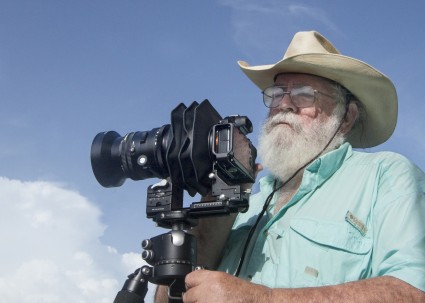Developing His Own Technique
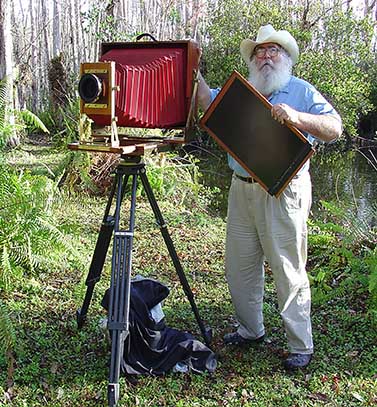
Beyond the aesthetic qualities of Clyde Butcher’s work, what distinguishes his landscape photography from that of other well-known photographers are the incredibly detailed mural-sized prints he produces on fiber-based silver gelatin paper. By carefully matching view camera format size to the subject matter photographed, Butcher can make prints measuring up to 5×9′ feet that allow the viewer to more fully embrace the breadth and scope of the landscape as Butcher experienced it in the field.
“I try to use the largest film possible for the particular subject I’m planning to photograph. So, if I have a huge, broad landscape, I use the 12×20″ view camera. If I am photographing something like the Ghost Orchid I use a 4×5″ view camera,” explains Butcher, who most often works with an 8×10″ view camera, but has a host of smaller and larger format view cameras. Butcher began making large prints as early as 1968. It has been in the last 20 or more years that he refined and perfected his technique of producing mural-sized prints.

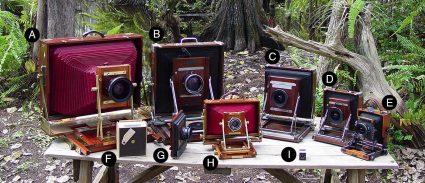 A. 12×20” Ron Wisner
A. 12×20” Ron Wisner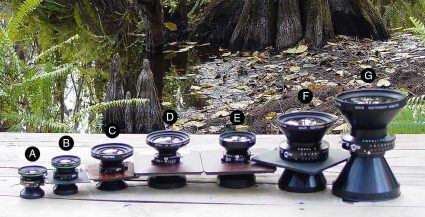
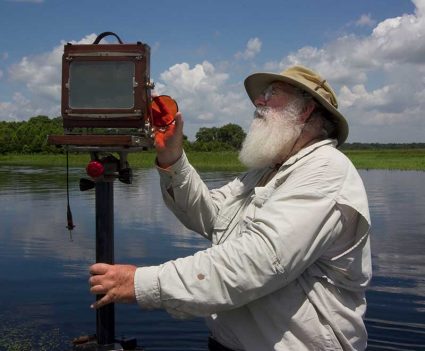
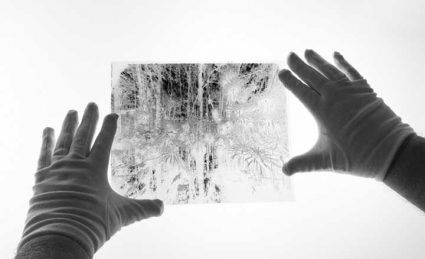 film can be ruined if the emulsion sides of two pieces of film touch. The film is submerged in a tank filled with processing solution and then agitated for approximately 7 minutes. The negatives are then submerged in a tank of stop bath solution and then into a fix solution. After processing the film is rinsed in water for an hour then emerged in a solution of Photo-flow for 30 seconds to prevent streaking. The negatives are hung to dry overnight.
film can be ruined if the emulsion sides of two pieces of film touch. The film is submerged in a tank filled with processing solution and then agitated for approximately 7 minutes. The negatives are then submerged in a tank of stop bath solution and then into a fix solution. After processing the film is rinsed in water for an hour then emerged in a solution of Photo-flow for 30 seconds to prevent streaking. The negatives are hung to dry overnight.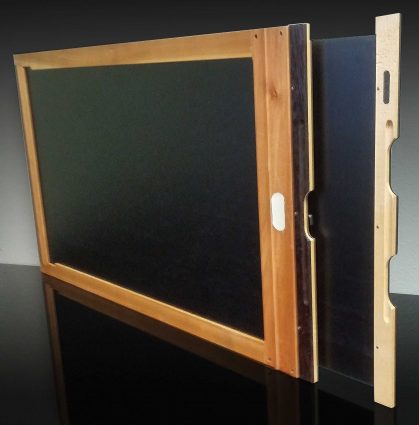
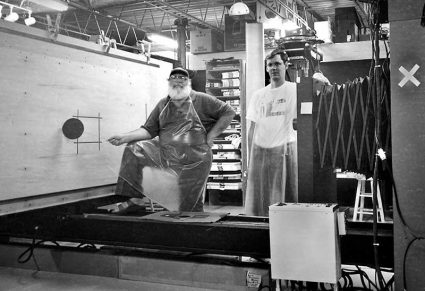 DARKROOM PROCESSING
DARKROOM PROCESSING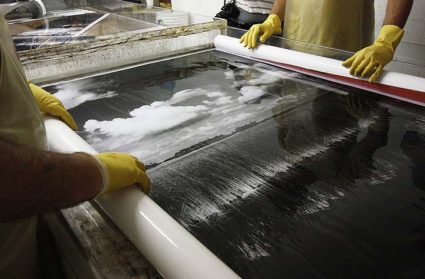 DARKROOM PROCESSING
DARKROOM PROCESSING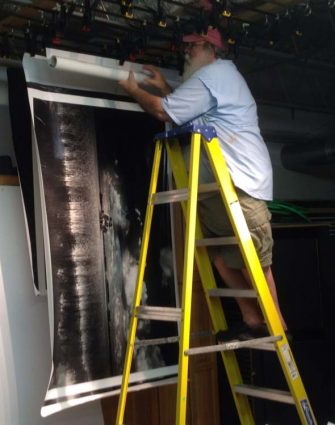 designed and constructed his own 40×60″ inch vertical washer. After the print has dried, it is stored flat with weights to reduce wrinkles.
designed and constructed his own 40×60″ inch vertical washer. After the print has dried, it is stored flat with weights to reduce wrinkles.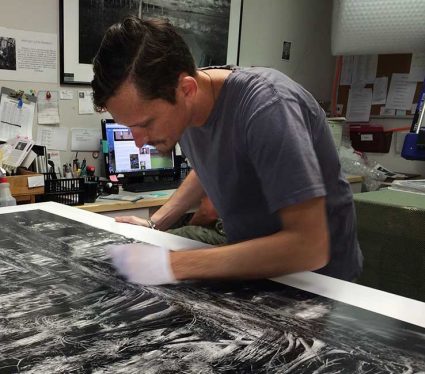 Butcher has created a specific numerical printing system to help maintain a more organized and efficient inventory of images. Each photograph is hand-printed by Butcher in his darkroom using fiber-based paper, and selenium toned for archival purposes, then mounted and matted to current archival standards. The photograph is then hand spotted with archival ink to remove any dust spots, signed, and issued a limited-edition number. As the number of prints available in each limited-edition becomes fewer, the price of the remaining prints increases.
Butcher has created a specific numerical printing system to help maintain a more organized and efficient inventory of images. Each photograph is hand-printed by Butcher in his darkroom using fiber-based paper, and selenium toned for archival purposes, then mounted and matted to current archival standards. The photograph is then hand spotted with archival ink to remove any dust spots, signed, and issued a limited-edition number. As the number of prints available in each limited-edition becomes fewer, the price of the remaining prints increases.